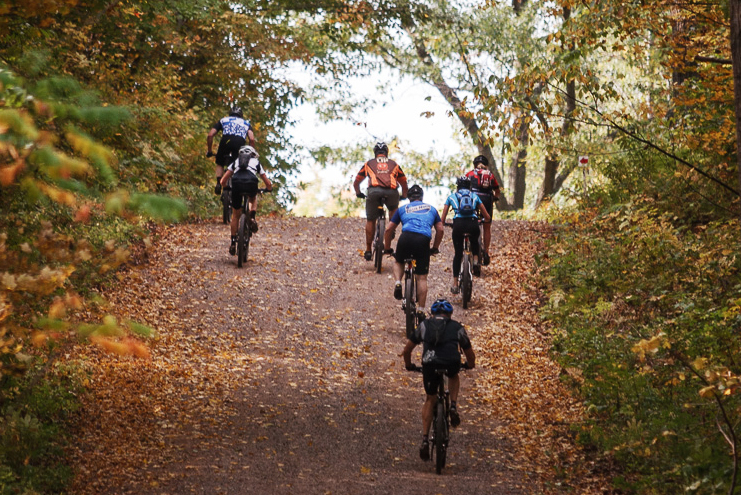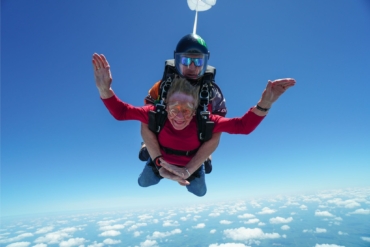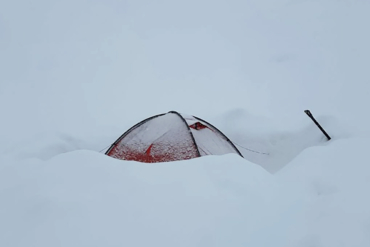From group trekking to cycling and whitewater rafting, here are the newest global health and safety guidelines for adventure travelers.
In an effort to curb the spread of COVID-19 among thrill-seeking adventure travelers, the Adventure Travel Trade Association (ATTA) this week released its official health and safety guidelines. The new protocols aim to help adventure travel companies around the globe safely reopen as they guide adventurers on hikes, bike trips, and rafting expeditions.
And while general practices like social distancing and hand-washing reign supreme, the Cleveland Clinic (ranked the world’s second-best hospital by Newsweek) co-created the guidelines alongside the ATTA and tour operators with a specific eye to adventure travel.
The guidelines feature a general handbook for guided outdoor activities plus sport-specific manuals for cycling, trekking, and rafting. The ATTA organization develops and protects sustainable adventure tourism around the globe. So these COVID-19 guidelines apply state to state in the United States and for international trips.
While the handbook focuses on what guides and operators can do, as an adventure traveler, you can leverage these guidelines to advocate for your own health and safety, too.
Overall Outdoor Adventure Guidelines
In general, ATTA notes that when outdoor travelers socially distance and wear masks, they lower the risk of COVID-19 transmission. And, as the Centers for Disease Control and Prevention (CDC) continues to impress, folks can substantially reduce their risk of exposure by staying 6 feet apart. People can also wash their hands with soap and water often, as well as wear a cloth face cover to help prevent the spread.
Beyond those common practices, recreationists can expect plenty of new safety protocols on guided trips from rafting to trekking. Here are the key takeaways from the ATTA “Adventure Travel COVID-19 Health and Safety Guidelines” for outdoor travelers.
Destinations and Insurance: What to Expect
As you choose a destination, check the travel restrictions where you live and plan to go, as you likely know. But also remember to review any restrictions related to returning home, like a self-quarantine mandate. And don’t be surprised if some destinations require the use of a contact tracing app.
Unfortunately, some bucket-list spots might be a petri dish for spreading coronavirus. And popular yet vulnerable communities may temporarily not allow visitors. So, heed your guide’s recommendations for less-frequented locations.
Regardless of location, the ATTA recommends that travelers purchase travel insurance. Make sure the coverage encompasses each destination and high-risk activity, like rock climbing. However, “no policy covers all COVID-19 travel risks,” the ATTA reports. So, carefully study your policy and understand who is expected to pay for potential incurred costs.
Guided Group Trips: Best Practices to Watch Out For
Before joining a guided group, you’ll most likely need to fill out a COVID-19 waiver. The form should include questions regarding isolation habits, test outcomes, and the existence of symptoms. On the ground, guides might administer temperature checks or inquire about symptoms.
For all activities, the number of people in a guided group should be reduced when possible. Furthermore, families and same-household groups have less probability of virus transmission versus a group that comprises folks from multiple origins. In a group, the social distancing and sanitization needs of other travelers might be far greater — or less — than yours. Ask your guide to help cooperatively manage those diverse comfort levels.
Throughout any group trip, COVID-19 risk increases during vehicle transport. To mitigate exposure, passengers can — and should — open windows and sit spaced apart. Additionally, if food is provided, don’t grab servings from buffet-style containers.
Also check to see if your drivers — or guides — are wearing additional personal protective equipment (PPE), like a face shield and gloves.
Equipment
As trips are staged, guides will advise about gear-fitting — like bikes, helmets, footwear, or packs — without hands-on adjustments. If they’re pointing, it’s not to be rude! When you choose your gear, like a personal flotation device (PFD), don’t touch other surfaces or equipment. The staging ground can be exciting: Slow down and be sure to pick up the correct size from the get-go.
Once you have set up your personal gear, you’ll be expected to transport and care for that equipment for the trip’s duration. For instance, you might need to load your bike onto a rack. Guides can help explain if you’re unsure how, and there are loads of helpful videos online, straight from the manufacturers.
As much as you’re inclined to, don’t share or swap your gear. If your equipment has mechanical issues, like a bike, your guide will try to coach you on how to fix it. And they should provide a clean repair kit. Alternatively, there might be a designated mechanic that handles the tools for the whole trip.
As a traveler, you should expect that any provided equipment be properly sanitized between uses. For example, gear that comes into contact with skin — backpacks, clothing, and sleeping bags — should be cleaned. Equipment like harnesses and helmets need to be disinfected according to the manufacturer’s guidelines and proven methods.
Be aware: The more frequently that equipment is used, the harder it is to routinely sanitize, like a ropes course. These protocols are now in the hands of guides, so they should be practicing enhanced safety measures. But if you’re unsure, ask them.
When you change into gear before and after a trip, allow more time. That will help limit the number of people in changing areas.
Cycling Guidelines
At times, wearing a face mask while cycling could be a challenge or restrict breathing. Per ATTA recommendations, cyclists should wear a face cover primarily when physical distancing isn’t possible. Riders can also wear one during close-proximity instruction or assistance, while taking breaks, or when hopping on transportation.
As you ride with a group, pedal in a staggered formation, rather than immediately behind or next to another rider. You’ll have to work a little harder without that slipstream.
Rafting Guidelines
For rafting, ATTA recommends that companies use two- or four-person boats instead of eight-person boats. On the boat, rafters should sit as far apart as possible.
Socializing at the put-in or take-out is customary — sorry! Keep your gear organized for an efficient launch at the boat ramp, rather than lingering in a public shared space. Same drill for the take-out. Multiple boats on a single trip should stick close together to minimize exposure to other groups.
In river culture, it can be hard to not offer or accept help. But for now, the same designated crew members need to manage your boat throughout the trip.
During whitewater adventures, it’s good to wear a face mask throughout close-proximity instruction and stretches of flatwater.
However, where there is a risk of falling in the water — during a row of rapids, for example — remove that face mask.
If river traffic is high, the size of eddies and beaches will become a big factor for breaks. If there’s not enough space to socially distance, y’all might need to keep paddling.
Guides should strive to avoid the rowdiest lines that could land folks outside the boat. If someone falls out, rescues should be as quick as possible in order to limit close contact.
Trekking Guidelines
As you trek with a guided group, wear a face mask during close-proximity instruction. Keep it on while helping each other along harder terrain. Also, use a face cover on crowded trails and when you cross paths with other trekkers. A face mask is also good to use where social distancing is difficult to maintain, like on singletrack through a thick forest.
On any guided group adventure, be prepared to meet other travelers at the trailheads or stops along the way. Those groups might not know or follow the same safety standards as your group. Before the trip, ask your guide about the recommended etiquette and communication during those situations.
At the end of the day, we’re all eager to get outside and play again. So don’t be shy about your personal safety protocols. And with these ATTA guidelines, you should feel empowered to observe — and trust — your guides’ safety priorities as well.








